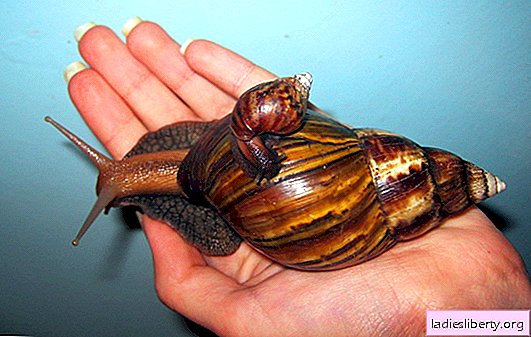
Pain in the earlobe is an unexpected and often disturbing symptom for the patient.
Often discomfort is accompanied by the occurrence of seals in the tissue of the lobe.
Particularly impressionable natures panic, suspecting the onset of a malignant process. Fortunately, there is no cause for concern.
Cancers in this area are found, but proceed in a completely different way.
Nevertheless, there are no reasons for joy: if the earlobes hurt, this indicates inflammation, which may well be caused by an infectious agent.
For this reason, you need to adhere to a certain middle position on the issue: not to panic, but not to let the process go by itself. What you need to know about pain in earlobes
Earlobes hurt: causes
Almost always, pain in the urine is due to the inflammatory process. The question is what origin is this inflammation. The list of immediate causes is wide:
• Atheroma. Popularly called wen. This name quite accurately reflects the origin of atheroma. In the area of the ears there are many sebaceous glands, sebum moisturizes the skin, has a local disinfecting effect. The speed and intensity of fat secretion depends on the individual characteristics of the body, if too much secret is produced, this can lead to the formation of atheroma. Salo "clogs" the gland. Atheroma itself is felt as a soft, rounded formation in the tissues of the lobe. It is painless. However, there is always a risk of tissue infection: the secret is an excellent breeding ground for bacteria, except for the secret, dead skin particles and dirt from the environment are found in the structure of the atheroma. When infection begins, the formation is painful, touching it responds with a dull pulling or throbbing pain.
The development of atheroma in itself can be explained by various reasons: violation of hygiene rules, metabolism, trauma in the area of the urine, etc.
• Allergic reaction. Everyone is affected by allergies, regardless of gender and age. However, due to the fact that women often wear jewelry, this problem affects them. Oddly enough, an allergy can also develop on metals: under the influence of sweat, the secretion of the sebaceous glands, jewelry oxidizes. Oxides affect the skin, causing an immune response. Pain of an allergic nature, usually burning, is accompanied by redness and inflammation of the lobe. Also, patients complain of itching and a feeling of dryness.
• Oncological pathologies. Tumors in the early stages do not appear in any way. The only thing the patient can pay attention to is the formation in the tissues of the lobe. In the first stages, pain is absent and may be absent, even when the tumor reaches a large size. Only a doctor can distinguish a dangerous tumor from a harmless atheroma according to the results of a histological examination. Fortunately for the patient, tumors are not so common.
• Abscess. As a result of improper piercing, pathogens can be introduced into the wound. The body responds to infection with increased blood supply to the affected area and the active work of white blood cells, followed by the formation of an abscess (or abscess). If earlobes hurt, an abscess is suspected first.
• Inflammatory ear lesions. In some cases, pain can be reflected. With inflammation of the ear (otitis media), the pain is localized in the ear organ itself, but often radiates to the earlobe, creating a false clinical picture.
Earlobe hurts: concomitant symptoms
Having found pain in the earlobe region, and often an unknown formation in the tissues, the patient is anxious. The first thing the patient does is turn to various sites, periodicals to make a diagnosis, but this is not worth it. Diagnosis is the prerogative of the doctor. The patient alone can only suggest a probable cause of discomfort. This can be done if you carefully listen to your own sensations: pain rarely occurs in isolation. More often we are talking about a number of typical manifestations:
• With atheroma, pain is absent. Education can reach enormous sizes (up to a centimeter or more in diameter), and remain "dumb". If the earlobe hurts, it means inflammation of the atheroma. Such an inflammatory process is accompanied by numbness of the lobe, dull aching or throbbing pains.
• Abscess of the earlobe from the very first days is accompanied by intense pain.
• An allergic reaction is determined even more easily: burning pains, "sore". The blush turns red, its swelling is observed. The patient feels an itch.
• Oncological pathologies at the first stages do not have specific symptoms. Unlike atheromas, tumors grow faster.
• Otitis is accompanied by throbbing pains in the ear itself, hearing loss, discharge from the ear canal (in some cases).
Based on a typical symptomatic complex, the patient can "by eye" determine what the reason is. However, it is impossible to postpone a visit to the doctor, especially since independent actions should not be taken.
Earlobe hurts: diagnosis
A specific diagnosis of pain in the lobe as such does not exist. Diagnosis is often made by exclusion. What does the patient need to do? First of all, decide on a doctor. It is most reasonable to consult a therapist. He will assess the probable source of the problem and refer to a specialist. Two specialists are involved in solving this problem:
• Otolaryngologist.
• Dermatologist (more often).
• Allergist-immunologist.
In exceptional cases, if there is suspicion of a tumor process, the patient is referred to an oncologist. It is important to keep in mind that referral to an oncologist is not equivalent to stating the presence of a tumor. All histological studies (in order to accurately diagnose the atheroma) are also in the competence of the oncologist. This is a common practice.
What do doctors do to pinpoint the source of trouble:
• History taking. The doctor conducts an oral survey of the patient to ascertain the nature of the complaints. This is a necessary stage, allowing the doctor to get an idea about the probable disease.
• Inspection. Visual assessment allows you to clarify the clinical picture. Some visual manifestations make it possible to suspect a particular pathology (as is the case with allergies).
• Palpation. Palpation makes it possible to evaluate the pain reaction, to "probe" the formation. In addition, at the stages of examination and palpation, the doctor can detect the expansion of the duct of the sebaceous gland. This is one of the most reliable diagnostic indicators of atheroma (or lipoma).
• Conducting a histological study of education. To obtain material for histological examination, a puncture (puncture) is performed. The formations themselves, due to which the earlobe may hurt, are heterogeneous. Although atheroma occurs most often, we can talk about other benign tumors and tumor formations: lipomas, fibromas, etc. Without histological examination, it is impossible to distinguish them from each other.
• Allergic tests.
• Ear examination.
Histology is rarely used. Usually enough visual assessment and palpation to accurately diagnose.
Earlobe hurts: treatment
Treatment is based on the cause of the disease. Local use of medicines and surgical treatment are practiced.
Drug treatment is carried out by the following groups of drugs:
• Anti-inflammatory drugs. Ointments Nise et al. Apply to the affected area to relieve inflammation. They are used only in combination with other drugs.
• Antibacterial drugs. Antibiotics are prescribed for proven infectious lesions.
• Antiseptics. Well-known hydrogen peroxide, iodine, boric alcohol. They are used for local disinfection.
• Antihistamines. They are used to eliminate the effects of an allergic reaction.
• Ear drops. Various groups of drugs for the treatment of otitis media. Assigned by a specialist.
To remove atheroma, abscesses, other tumors and tumor formations, they resort to surgical intervention. It can be "classic" (during which the doctor makes an incision) or minimally invasive (via puncture). To remove malignant tumors, puncture is not used, since the task is to completely or maximally excise pathological tissue.
Earlobes hurt: what can not be done
There are a number of actions that are not recommended to be taken:
• In no case should squeeze out "wen" and ulcers. Atheromas, lipomas, and even abscesses are limited to a special capsule. With physical impact, the capsule ruptures, the contents go beyond it. Given that the contents are most often purulent, this will lead to further infection of the tissues and aggravation of the process.
• Do not warm the affected area. High temperatures can aggravate the inflammatory process.
• Self-medication is also unacceptable. Even local use of drugs is fraught with the development of side effects. The exceptions are boric alcohol, hydrogen peroxide, iodine and "green".
Thus, if the earlobe hurts, most often it is atheroma or a developing abscess. Both that, and another, can pass independently, but it is not worth risking. At the first manifestations of pain, burning, itching, etc., it will not be superfluous to consult a doctor. In no case can they be squeezed out, it is dangerous and can lead to unpredictable consequences.











